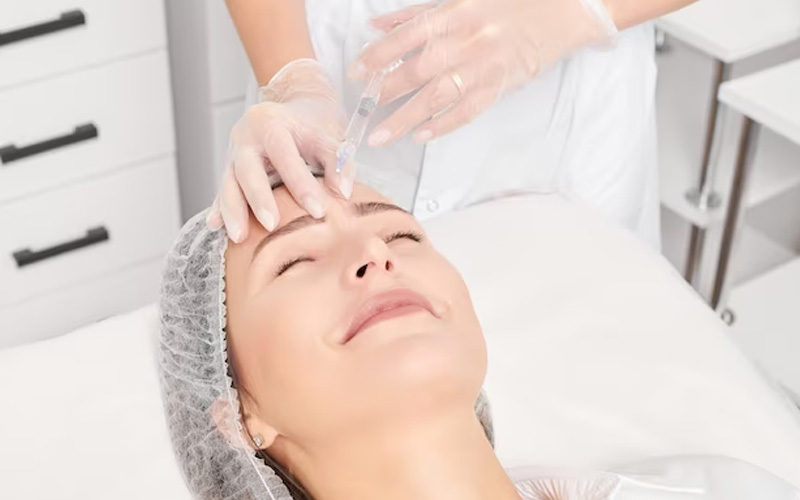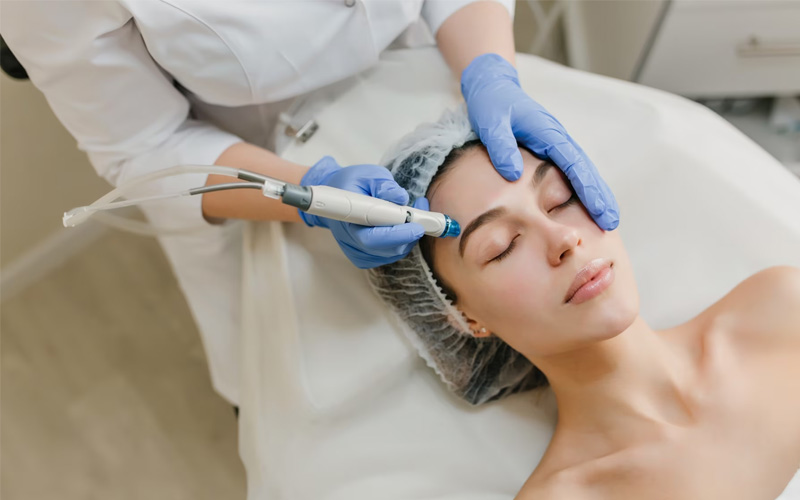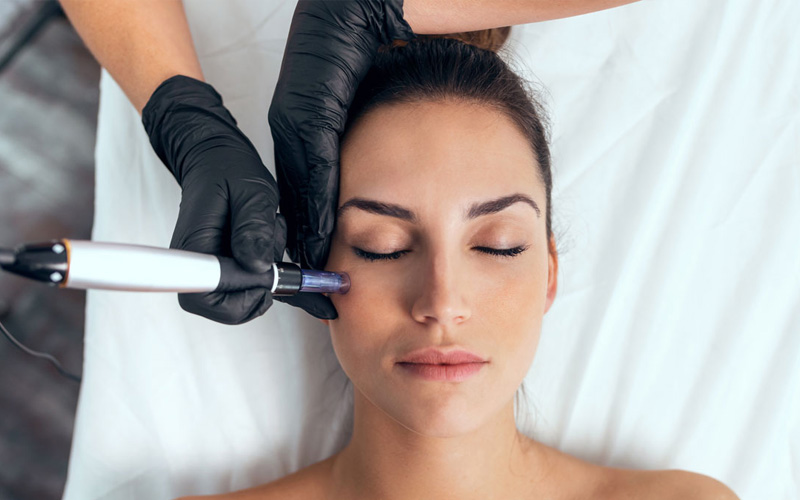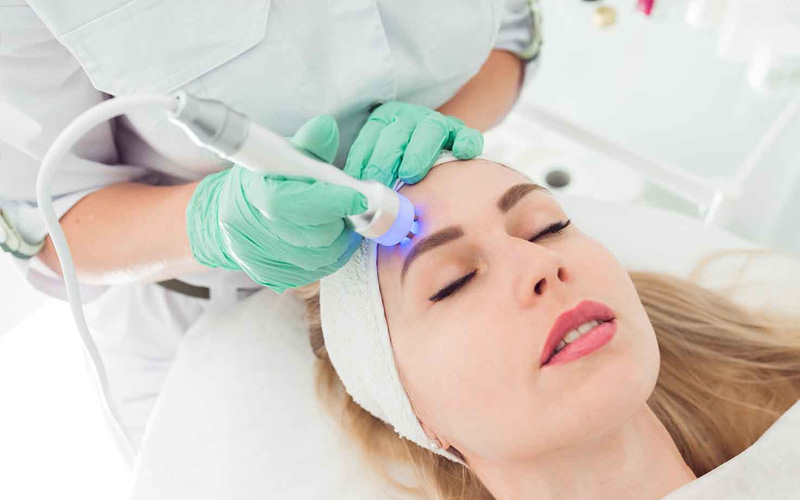Facial Filler Applications
In recent years, advancements in technology have led to an increase in the use of fillers for facial rejuvenation. Initially designed to fill empty spaces, fillers are now also employed to provide lifting effects around connective tissues and stimulate the production of various substances that promote a youthful appearance. While it is a great idea to slow down or even reverse the effects of aging on the face, careful planning is essential when considering these invasive procedures.
As we age, the subcutaneous fat in our face begins to thin, and the production of collagen and elastin decreases. This reduction, combined with the direct impact of facial muscles on the skin, results in the prominence of wrinkles. Additionally, the effects of gravity cause tissues to sag over time, leading to unwanted changes in appearance. Addressing these underlying issues can help minimize, slow down, or conceal these effects, and fillers have become one of the most commonly used solutions in recent years.
Common Uses of Fillers in Facial Aesthetics:
- Lip Enhancement: Fillers are frequently used to plump and define the lips, creating a fuller appearance.
- Cheek Volume: By adding volume to the midface, fillers can enhance cheekbones and provide a more youthful contour to the face.
- Jawline Definition: Fillers can be strategically placed to accentuate the jawline and chin, providing a more defined and sculpted look.
- Under-Eye Treatment: Fillers can help reduce the appearance of hollowness and dark circles under the eyes by restoring volume.
- Wrinkle Reduction: Fillers are effective in softening fine lines and wrinkles, particularly around the mouth, nose, and forehead.
Mechanism of Action:
Fillers typically contain substances like hyaluronic acid, calcium hydroxylapatite, or poly-L-lactic acid, each of which serves different purposes:
- Hyaluronic Acid: Known for its excellent hydrating properties, it attracts moisture and helps maintain skin elasticity.
- Calcium Hydroxylapatite: This filler not only adds volume but also stimulates collagen production over time.
- Poly-L-Lactic Acid: A biostimulatory filler that encourages collagen production, gradually improving skin texture and elasticity.
Treatment Process:
- Consultation: A thorough assessment is conducted to understand the patient’s needs, facial structure, and areas of concern.
- Preparation: The treatment area may be numbed using a topical anesthetic to ensure comfort during the procedure.
- Injection: The filler is injected into specific areas using fine needles or cannulas. The technique and depth of injection depend on the desired outcome and treatment area.
- Post-Treatment Care: Patients may experience mild swelling or bruising, which typically resolves quickly. It’s recommended to avoid strenuous activities and sun exposure for a few days following the treatment.
Safety and Considerations:
- Fillers are generally safe, but it’s crucial to choose a qualified and experienced practitioner to minimize risks and achieve optimal results.
- Results are usually immediate, but they may take a few days to fully settle. Depending on the type of filler used, results can last from several months to a couple of years.
Conclusion:
Facial fillers are a versatile and effective solution for combating the signs of aging. By restoring lost volume and enhancing facial contours, fillers can provide a more youthful and refreshed appearance. While they are not a permanent solution, when administered correctly by skilled professionals, they can significantly improve facial aesthetics and boost confidence. Careful planning and consideration of individual needs are essential for achieving the best outcomes in facial rejuvenation.
When considering the use of fillers in the facial region, it is essential to recognize that any filler is a foreign substance. Therefore, it is crucial to choose FDA-approved fillers from reputable brands that have undergone the necessary research and testing for safety and efficacy.
Key Considerations for Safety:
- FDA Approval: Always opt for fillers that are FDA-approved, ensuring they meet safety standards and have been clinically tested.
- Reputable Brands: Choose established brands that are widely used around the world, as they have a proven track record for safety.
- Appropriate Filler Selection: The choice of filler should be tailored to the specific area of the face being treated, taking into account factors such as the desired outcome, skin type, and anatomical considerations.
Our Clinic’s Approach:
In our clinic, we primarily use high-quality hyaluronic acid fillers that are FDA-approved. These fillers offer several advantages:
- Low Risk of Reaction: Because they are not derived from animals or humans, the risk of allergic reactions or complications is significantly reduced.
- Biocompatibility: Hyaluronic acid is naturally occurring in the body, which allows for easier metabolism and integration into the skin.
Duration and Metabolism:
The longevity of the filler in the skin and when it begins to metabolize can vary based on several factors:
- Individual Metabolism: Each person’s metabolic rate can influence how quickly the body breaks down the filler.
- Skin and Muscle Structure: The characteristics of the skin and underlying muscle can affect how long the filler remains effective.
Conclusion:
Facial fillers can be safe when administered by trained professionals using FDA-approved products. It is essential to have a thorough consultation to assess individual needs and choose the most suitable filler for the desired results. By selecting high-quality fillers and ensuring proper technique during administration, patients can minimize risks and achieve satisfying outcomes in facial rejuvenation.
Biz kliniğimizde FDA onaylı hyalüronik asit içeriği yoğun dolguları tercih etmekteyiz. Bu dolgular hayvan veya insandan elde edilmedikleri için herhangi bir reaksiyon yapma riskleri yok denecek adar azdır. Ayrıca vücudumuz tarafından metabolize edilebilmeleri avantajdır. Kullanılan dolgunun ne kadar süreyle yerinde kalacağı ne zaman metabolize olarak etkisini yitireceği kişinin metabolik durumuna, cilt yapısına, kas yapısına göre değişiklik gösterebilir.
Before undergoing a filler treatment, it is crucial to take several steps to ensure safety and effectiveness:
- Detailed Facial Examination:
A comprehensive facial assessment should be conducted to evaluate the structure of the face and identify the specific areas that require treatment. This evaluation will help determine the most suitable type of filler for each area. - Understanding Filler Limitations:
It’s essential to understand that fillers cannot block facial muscles, so combining fillers with botulinum toxin (e.g., to address forehead lines, crow’s feet, or to lift the brows) is not possible. Fillers are best used in specific areas, such as:- Temples
- Midface
- Lips
- Chin
- Cheekbones
- Avoiding Under-Eye Fillers:
Initially, under-eye fillers gained popularity; however, due to complications that have arisen in recent years, they are now less commonly used. Our clinic prioritizes non-filler solutions for under-eye issues. - Medications and Supplements:
Patients should discontinue blood thinners (e.g., aspirin, ibuprofen) and any supplements that may increase bleeding (such as fish oil or vitamin E) at least 48 hours before the procedure. This helps minimize the risk of bruising and swelling post-treatment. - Consultation and Expectations:
Discuss your medical history, allergies, and any previous cosmetic procedures with your practitioner. Setting realistic expectations regarding the outcomes of the filler treatment is crucial.
Conclusion:
Taking these precautions before a filler application can help ensure a safe and satisfactory experience. A thorough assessment and open communication with your healthcare provider will contribute significantly to achieving the desired results in facial rejuvenation.
The filler application process involves several key steps to ensure safety and effectiveness:
- Preparation of the Treatment Area:
The area to be treated is first cleaned and sterilized using antiseptics to minimize the risk of infection. - Injection Technique:
- Fillers can be administered using either a needle or a cannula. The choice between the two depends on the specific area being treated and the practitioner’s preference.
- The injection technique may vary based on the desired outcome, such as volume enhancement or wrinkle reduction.
- Post-Procedure Effects:
- Unlike botulinum toxin injections, filler treatments may cause temporary swelling in the treated area. This swelling usually subsides within a few hours to a couple of days.
- It is common to recommend the use of antibiotic creams post-treatment to help reduce the risk of infection and promote healing.
- Duration of Effect:
The effectiveness of the filler can vary depending on the area treated and the type of filler used. Typically, results can last anywhere from 6 to 12 months before additional treatments are needed
Conclusion:
Filler administration is a relatively straightforward procedure that can yield immediate results. Following proper sterilization techniques and post-procedure care is crucial for achieving optimal outcomes and minimizing side effects. Regular follow-ups with your practitioner can help maintain the desired results and ensure patient satisfaction.
Despite being widely used, filler applications in the facial region require a serious and cautious approach. As an invasive procedure involving a foreign substance, it is crucial that fillers are administered by experienced professionals using appropriate materials. Here are some potential complications that may arise after filler treatment:
Common Complications:
-
Localized Redness and Swelling:
These are typical reactions following filler injections and usually subside within a few hours to a couple of days. -
Allergic Reactions:
Some individuals may experience allergic reactions to the filler material, leading to redness, swelling, and discomfort.
More Serious Complications:
-
Abscess and Infection:
Infections can develop at the injection site, potentially leading to more severe complications if not addressed promptly. -
Tissue Necrosis:
If the filler is accidentally injected into a blood vessel, it can restrict blood flow, causing tissue death in the affected area. -
Vision Loss or Blindness:
In rare cases, filler injections near the eyes can lead to serious complications, including vision loss or blindness, if the filler enters the vascular system.
Importance of Immediate Medical Attention:
In the event of any complications, it is essential to contact your doctor immediately. Early intervention can significantly reduce the risk of severe outcomes and help manage any adverse effects effectively. Always ensure that you receive filler treatments from qualified professionals who follow appropriate safety protocols to minimize risks.
Conclusion:
While fillers can provide significant aesthetic benefits, understanding the potential complications and having a plan for addressing them is crucial for a safe and satisfactory experience.



